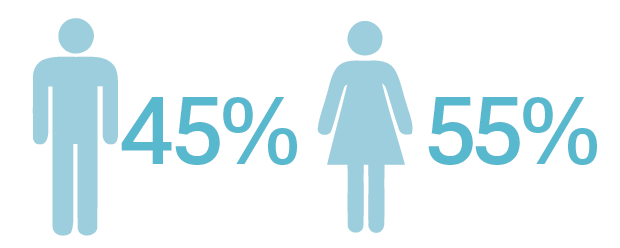1 February 2018
Emerging Careers: Operations Research Analysts
By David Washburn
UC San Diego Extension's Center for Research identified the top 10 occupations that combined the highest projected growth rates and the most online job postings using information from labor-market data. Operations Research Analysts have the second-highest projected growth rate in our Emerging Careers report.

Philip Koo estimates that he’s saved the Department of Defense millions of dollars by simply doing what he does best–finding ways to improve how the military acquires products and services for warfighters.
Koo, a scientist specializing in operations research, does this from his desk at Space and Naval Warfare Systems Command (SPAWAR) in San Diego using his skills as a Lean Six Sigma Black Belt.
He said it’s an exciting time to be in the operations research field, where people with the right skill set are highly sought after “unicorns” as more companies look for ways to improve their processes for speed and to cut costs.
How is your field changing?
The big focus at SPAWAR is cybersecurity. Anything that is cyber, SPAWAR will embrace it. Making processes and procedures better, refining how we respond to an attack or to recuperate from an attack. In 2015, the Secretary of the Navy sent out a memorandum stating that the Navy needed to be more data savvy, which means investments in such things as machine learning and artificial intelligence.
What areas/positions are in high demand is this field and why?
We need anyone who has a cybersecurity background–software engineers, computer scientists, mathematicians. If you have data science and cybersecurity experience, you are a unicorn. You are in high demand and you are hard to find.
 And if you have a background in mathematics, you’ll have a better understanding of algorithm design and development. This will give you an advantage over people who learned by simply hacking. Cybersecurity, machine learning, artificial intelligence and deep learning all require mathematics.
And if you have a background in mathematics, you’ll have a better understanding of algorithm design and development. This will give you an advantage over people who learned by simply hacking. Cybersecurity, machine learning, artificial intelligence and deep learning all require mathematics.
What advice do you have for someone starting out in this field?
First and foremost, you need to know that you will always be learning. A quote I always will remember: “If you are unwilling to learn, no one can help you. If you are determined to learn, no one can stop you.”
Study with the intent to teach. The one who teaches will learn more than the students. Major in STEM (short for science, technology, engineering and math) and focus on mathematics and computer science. They are the building blocks for data science, cybersecurity and artificial intelligence, which covers data mining and machine learning.
 What’s your background/how did you get started?
What’s your background/how did you get started?
I was fortunate enough to become friends with a bunch of graduate students in math when I was an undergrad at Berkeley. They inspired me to pursue a degree in mathematics. After getting my undergrad, I went to work for General Dynamics and then on to grad school at San Diego State for a master’s in applied math. After getting my master’s, I left General Dynamics and went to work for a small company that first got swallowed by Titan Corp. and then by LG. I went to work full-time for SPAWAR in March 2002 and have been there ever since.
What do you like most about teaching for Extension?
I love UC San Diego. It is one of the top universities in the nation. It gives me the opportunity to have an impact on students from all over the world. I consider myself data science evangelist. “It’s happening and you need to do this,” I tell my students. “It will be good for you.”
Philip Koo teaches Statistics for Data Analysis for UC San Diego Extension. Learn more about the Data Analysis & Mathematics courses and programs on our website, or contact the department at unex-techdata@ucsd.edu or (858) 534-9358.